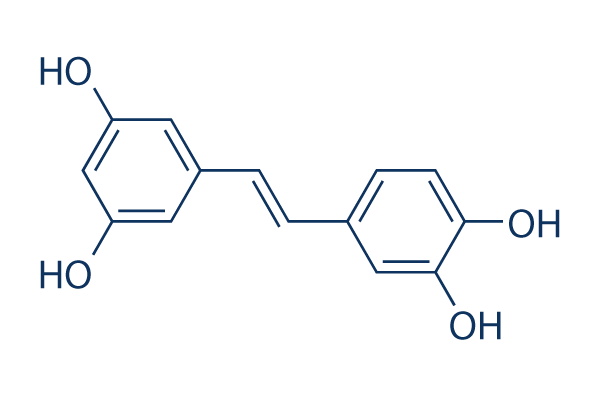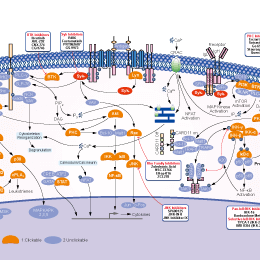
- Bioactive Compounds
- By Signaling Pathways
- PI3K/Akt/mTOR
- Epigenetics
- Methylation
- Immunology & Inflammation
- Protein Tyrosine Kinase
- Angiogenesis
- Apoptosis
- Autophagy
- ER stress & UPR
- JAK/STAT
- MAPK
- Cytoskeletal Signaling
- Cell Cycle
- TGF-beta/Smad
- DNA Damage/DNA Repair
- Compound Libraries
- Popular Compound Libraries
- Customize Library
- Clinical and FDA-approved Related
- Bioactive Compound Libraries
- Inhibitor Related
- Natural Product Related
- Metabolism Related
- Cell Death Related
- By Signaling Pathway
- By Disease
- Anti-infection and Antiviral Related
- Neuronal and Immunology Related
- Fragment and Covalent Related
- FDA-approved Drug Library
- FDA-approved & Passed Phase I Drug Library
- Preclinical/Clinical Compound Library
- Bioactive Compound Library-I
- Bioactive Compound Library-Ⅱ
- Kinase Inhibitor Library
- Express-Pick Library
- Natural Product Library
- Human Endogenous Metabolite Compound Library
- Alkaloid Compound LibraryNew
- Angiogenesis Related compound Library
- Anti-Aging Compound Library
- Anti-alzheimer Disease Compound Library
- Antibiotics compound Library
- Anti-cancer Compound Library
- Anti-cancer Compound Library-Ⅱ
- Anti-cancer Metabolism Compound Library
- Anti-Cardiovascular Disease Compound Library
- Anti-diabetic Compound Library
- Anti-infection Compound Library
- Antioxidant Compound Library
- Anti-parasitic Compound Library
- Antiviral Compound Library
- Apoptosis Compound Library
- Autophagy Compound Library
- Calcium Channel Blocker LibraryNew
- Cambridge Cancer Compound Library
- Carbohydrate Metabolism Compound LibraryNew
- Cell Cycle compound library
- CNS-Penetrant Compound Library
- Covalent Inhibitor Library
- Cytokine Inhibitor LibraryNew
- Cytoskeletal Signaling Pathway Compound Library
- DNA Damage/DNA Repair compound Library
- Drug-like Compound Library
- Endoplasmic Reticulum Stress Compound Library
- Epigenetics Compound Library
- Exosome Secretion Related Compound LibraryNew
- FDA-approved Anticancer Drug LibraryNew
- Ferroptosis Compound Library
- Flavonoid Compound Library
- Fragment Library
- Glutamine Metabolism Compound Library
- Glycolysis Compound Library
- GPCR Compound Library
- Gut Microbial Metabolite Library
- HIF-1 Signaling Pathway Compound Library
- Highly Selective Inhibitor Library
- Histone modification compound library
- HTS Library for Drug Discovery
- Human Hormone Related Compound LibraryNew
- Human Transcription Factor Compound LibraryNew
- Immunology/Inflammation Compound Library
- Inhibitor Library
- Ion Channel Ligand Library
- JAK/STAT compound library
- Lipid Metabolism Compound LibraryNew
- Macrocyclic Compound Library
- MAPK Inhibitor Library
- Medicine Food Homology Compound Library
- Metabolism Compound Library
- Methylation Compound Library
- Mouse Metabolite Compound LibraryNew
- Natural Organic Compound Library
- Neuronal Signaling Compound Library
- NF-κB Signaling Compound Library
- Nucleoside Analogue Library
- Obesity Compound Library
- Oxidative Stress Compound LibraryNew
- Plant Extract Library
- Phenotypic Screening Library
- PI3K/Akt Inhibitor Library
- Protease Inhibitor Library
- Protein-protein Interaction Inhibitor Library
- Pyroptosis Compound Library
- Small Molecule Immuno-Oncology Compound Library
- Mitochondria-Targeted Compound LibraryNew
- Stem Cell Differentiation Compound LibraryNew
- Stem Cell Signaling Compound Library
- Natural Phenol Compound LibraryNew
- Natural Terpenoid Compound LibraryNew
- TGF-beta/Smad compound library
- Traditional Chinese Medicine Library
- Tyrosine Kinase Inhibitor Library
- Ubiquitination Compound Library
-
Cherry Picking
You can personalize your library with chemicals from within Selleck's inventory. Build the right library for your research endeavors by choosing from compounds in all of our available libraries.
Please contact us at [email protected] to customize your library.
You could select:
- Antibodies
- Bioreagents
- qPCR
- 2x SYBR Green qPCR Master Mix
- 2x SYBR Green qPCR Master Mix(Low ROX)
- 2x SYBR Green qPCR Master Mix(High ROX)
- Protein Assay
- Protein A/G Magnetic Beads for IP
- Anti-Flag magnetic beads
- Anti-Flag Affinity Gel
- Anti-Myc magnetic beads
- Anti-HA magnetic beads
- Magnetic Separator
- Poly DYKDDDDK Tag Peptide lyophilized powder
- Protease Inhibitor Cocktail
- Protease Inhibitor Cocktail (EDTA-Free, 100X in DMSO)
- Phosphatase Inhibitor Cocktail (2 Tubes, 100X)
- Cell Biology
- Cell Counting Kit-8 (CCK-8)
- Animal Experiment
- Mouse Direct PCR Kit (For Genotyping)
- New Products
- Contact Us
Piceatannol
Synonyms: Astringenin
Piceatannol, a natural stilbene, is a selective Syk inhibitor and ~10-fold selectivity versus Lyn.

Piceatannol Chemical Structure
CAS No. 10083-24-6
Purity & Quality Control
Batch:
Purity:
99.80%
99.80
Piceatannol Related Products
| Related Targets | ZAP70 | Click to Expand |
|---|---|---|
| Related Products | R406 R406 (free base) PRT062607 (P505-15) HCl Entospletinib (GS-9973) BAY-61-3606 PRT-060318 2HCl TAK-659 Hydrochloride RO9021 | Click to Expand |
| Related Compound Libraries | Tyrosine Kinase Inhibitor Library PI3K/Akt Inhibitor Library Angiogenesis Related compound Library HIF-1 Signaling Pathway Compound Library FDA-approved Anticancer Drug Library | Click to Expand |
Signaling Pathway
Cell Data
| Cell Lines | Assay Type | Concentration | Incubation Time | Formulation | Activity Description | PMID |
|---|---|---|---|---|---|---|
| human lung mast cells | Function assay | Inhibition of SYK in human lung mast cells assessed as reduction in anti-IgE-stimulated histamine release, EC50=25 μM | 22257213 | |||
| human A2780 cells | Proliferation assay | 2 days | Antiproliferative activity against human A2780 cells after 2 days by Alamar Blue assay, IC50=41 μM | 24239390 | ||
| mouse 3T3L1 cells | Function assay | 10 to 50 μM | 48 h | Reduction in triglyceride level in mouse 3T3L1 cells at 10 to 50 uM after 48 hrs | 22765896 | |
| Click to View More Cell Line Experimental Data | ||||||
Biological Activity
| Description | Piceatannol, a natural stilbene, is a selective Syk inhibitor and ~10-fold selectivity versus Lyn. | |||||||||||
|---|---|---|---|---|---|---|---|---|---|---|---|---|
| Targets |
|
| In vitro | ||||
| In vitro | Piceatannol displays ~10-fold selectivity for Syk over Lyn. Piceatannol treatment in RBL-2H3 cells strongly inhibits the antigen-stimulated phosphorylation of Syk and of most other cellular proteins but not the receptor β or γ subunit, in a dose-dependent manner. Piceatannol is also a potent inhibitor of histamine release in mast cells. Selective inhibition of Syk by Piceatannol blocks receptor-mediated down-stream cellular responses in mast cells including prevention of 1,4,5-IP3 synthesis, secretion and membrane ruffling and spreading. [1] Piceatannol also potently inhibits PKA, PKC, MLCK, and CDPK with IC50 of 3 μM, 8 μM, 12 μM, and 19 μM, respectively. [2] Piceatannol selectively prevents the IFNα-induced tyrosine phosphorylation of STAT3 and -5 but not STAT1 and -2, paralleled by the loss of Jak1 and IFNAR1 tyrosine phosphorylation but not Tyk2 and IFNAR2. [3] Piceatannol potently induces apoptotic cell death in BJAB Burkitt-like lymphoma cells with ED50 of 25 μM, through the activation of caspase-3 and mitochondrial permeability transition independent of the CD95/Fas signaling pathway. [4] Piceatannol inhibits NF-κB activation induced by TNF, H2O2, PMA, LPS, okadaic acid, and ceramide. Piceatannol suppresses the expression of TNF-induced NF-κB-dependent reporter gene and of matrix metalloprotease-9, cyclooxygenase-2, and cyclin D1 independent of Syk kinase, by blocking TNF-induced IκBα phosphorylation, p65 phosphorylation, p65 nuclear translocation, and IκBα kinase activation. [5] Piceatannol directly binds with PI3K in an ATP-competitive manner, and suppresses PI3K activity with anti-atherosclerotic effects more effectively than resveratrol. [8] Piceatannol inhibits androgen-dependent (AD) and androgen-independent (AI) CaP cell proliferation, which is accompanied by reduced expression of mTOR and its key effectors AKT and eIF4EBP-1. [10] | |||
|---|---|---|---|---|
| Kinase Assay | In Vitro Protein-tyrosine Kinase Assays | |||
| Recombinant Syk is expressed in baculovirus-infected St9 cells. Assays of recombinant Syk activity are carried out using angiotensin I peptide as substrate. The enzyme activities of recombinant Syk are measured by phosphorylation of angiotensin I peptide in the presence of various concentrations of Piceatannol. | ||||
| Cell Research | Cell lines | LNCaP, DU145, and PC-3 | ||
| Concentrations | Dissolved in DMSO, final concentrations ~50 μM | |||
| Incubation Time | 72 hours and 1 week | |||
| Method | Cells are exposed to increasing concentrations of Piceatannol. For the determination of cell proliferation, cells are assayed at 72 hours by trypan blue exclusion using a hemocytometer. After 1 week, colonies are stained with 1.25% crystal violet and quantified by measuring the absorbance at 595 nm. |
|||
| In Vivo | ||
| In vivo | Oral administration of Piceatannol induces a remarkable amelioration of the disruption of the colonic architecture, a significant reduction in colonic myeloperoxidase (MPO) activity, and a decrease in production of inflammatory mediators such as nitric oxide (NO), prostaglandin (PG) E2, and pro-inflammatory cytokines in BALB/c mice with dextran sulfate sodium (DSS)-induced colitis. [7] Piceatannol treatment inhibits the rises in blood glucose levels at early stages and improves the impaired glucose tolerance at late stages in type 2 diabetic model db/db mice. [9] | |
|---|---|---|
| Animal Research | Animal Models | Female BALB/c mice with dextran sulfate sodium (DSS)-induced colitis |
| Dosages | ~10 mg/kg/day | |
| Administration | Orally | |
Chemical Information & Solubility
| Molecular Weight | 244.24 | Formula | C14H12O4 |
| CAS No. | 10083-24-6 | SDF | Download Piceatannol SDF |
| Smiles | C1=CC(=C(C=C1C=CC2=CC(=CC(=C2)O)O)O)O | ||
| Storage (From the date of receipt) | |||
|
In vitro |
DMSO : 48 mg/mL ( (196.52 mM) Moisture-absorbing DMSO reduces solubility. Please use fresh DMSO.) Ethanol : 48 mg/mL Water : Insoluble |
Molecular Weight Calculator |
|
In vivo Add solvents to the product individually and in order. |
In vivo Formulation Calculator |
||||
Preparing Stock Solutions
Molarity Calculator
In vivo Formulation Calculator (Clear solution)
Step 1: Enter information below (Recommended: An additional animal making an allowance for loss during the experiment)
mg/kg
g
μL
Step 2: Enter the in vivo formulation (This is only the calculator, not formulation. Please contact us first if there is no in vivo formulation at the solubility Section.)
% DMSO
%
% Tween 80
% ddH2O
%DMSO
%
Calculation results:
Working concentration: mg/ml;
Method for preparing DMSO master liquid: mg drug pre-dissolved in μL DMSO ( Master liquid concentration mg/mL, Please contact us first if the concentration exceeds the DMSO solubility of the batch of drug. )
Method for preparing in vivo formulation: Take μL DMSO master liquid, next addμL PEG300, mix and clarify, next addμL Tween 80, mix and clarify, next add μL ddH2O, mix and clarify.
Method for preparing in vivo formulation: Take μL DMSO master liquid, next add μL Corn oil, mix and clarify.
Note: 1. Please make sure the liquid is clear before adding the next solvent.
2. Be sure to add the solvent(s) in order. You must ensure that the solution obtained, in the previous addition, is a clear solution before proceeding to add the next solvent. Physical methods such
as vortex, ultrasound or hot water bath can be used to aid dissolving.
Tech Support
Answers to questions you may have can be found in the inhibitor handling instructions. Topics include how to prepare stock solutions, how to store inhibitors, and issues that need special attention for cell-based assays and animal experiments.
Tel: +1-832-582-8158 Ext:3
If you have any other enquiries, please leave a message.
* Indicates a Required Field
Tags: buy Piceatannol | Piceatannol supplier | purchase Piceatannol | Piceatannol cost | Piceatannol manufacturer | order Piceatannol | Piceatannol distributor







































